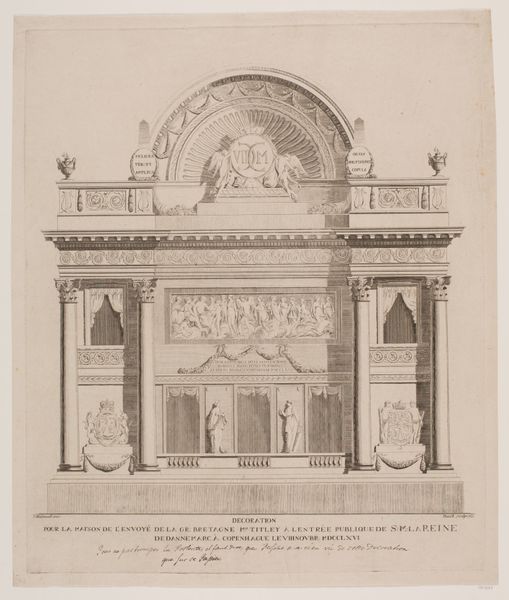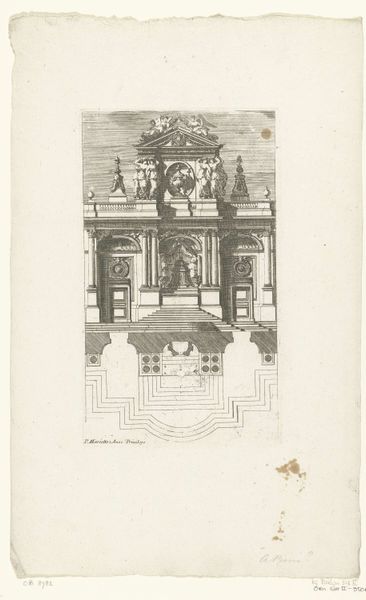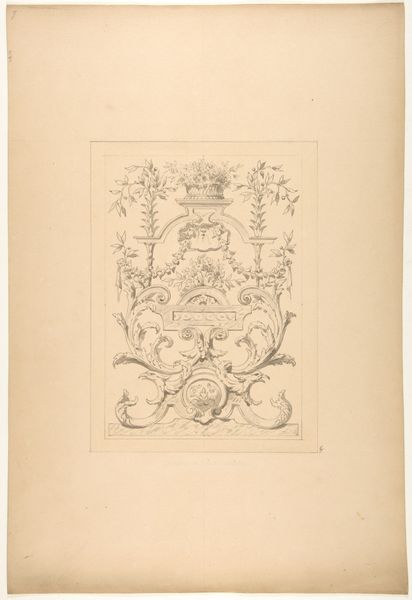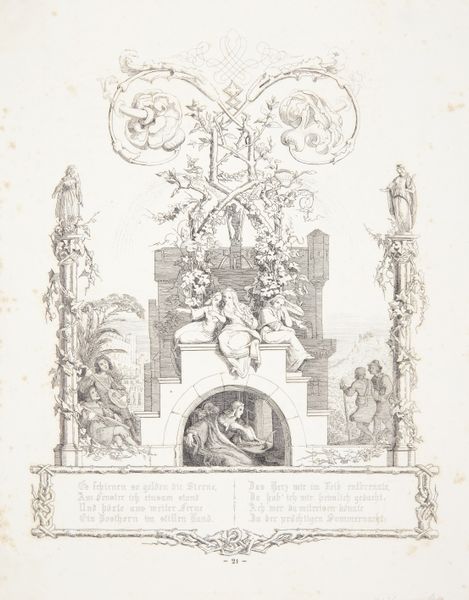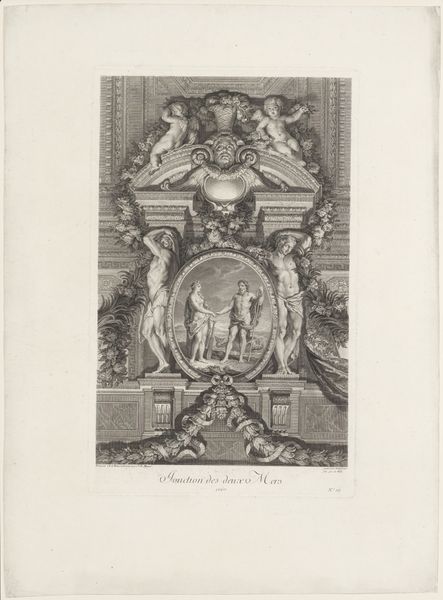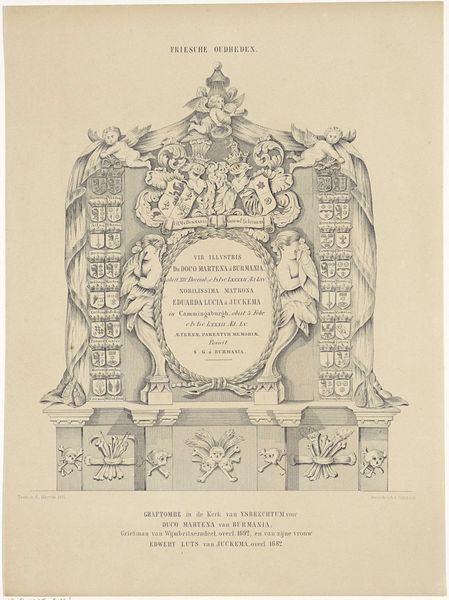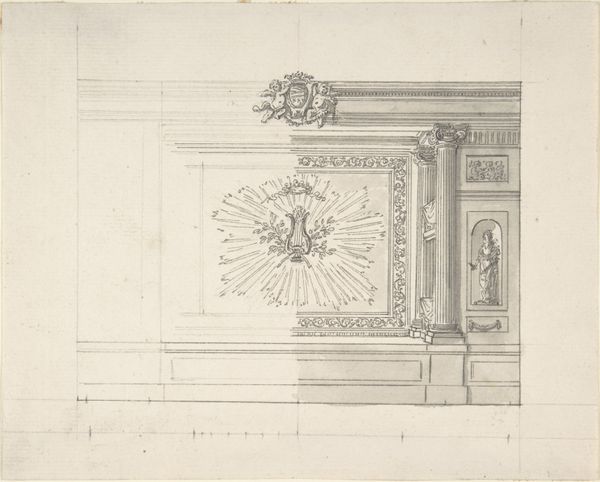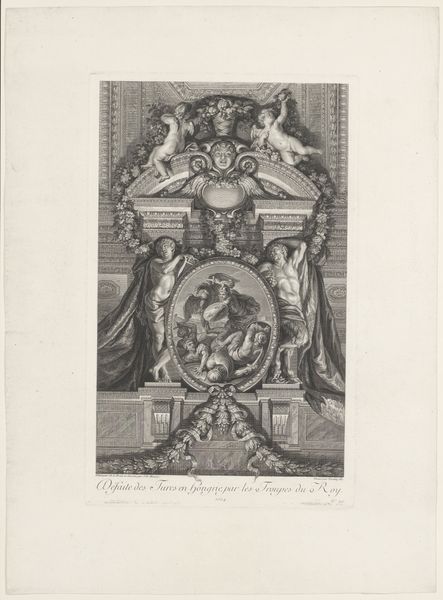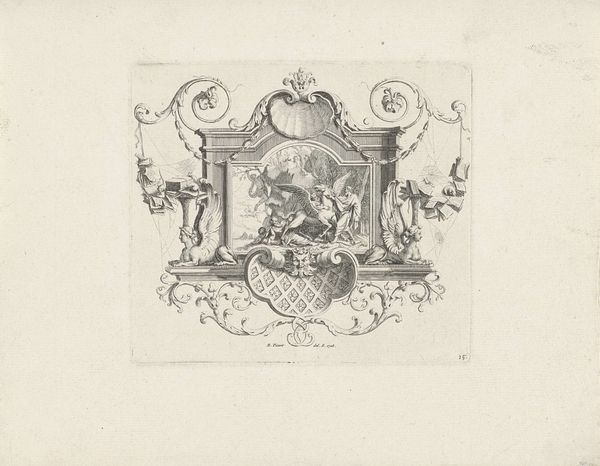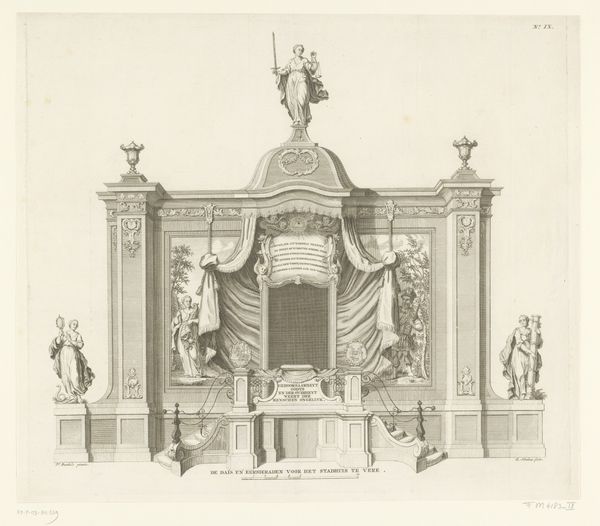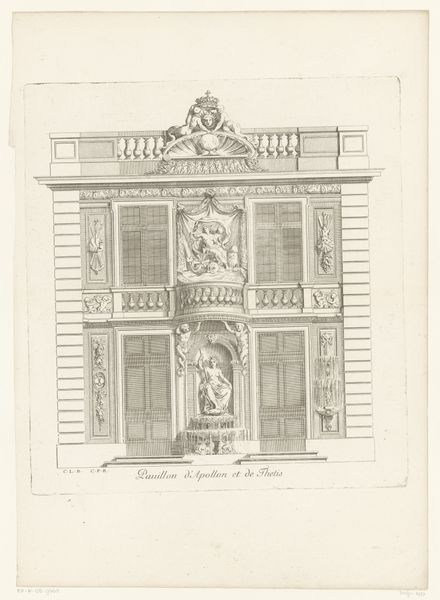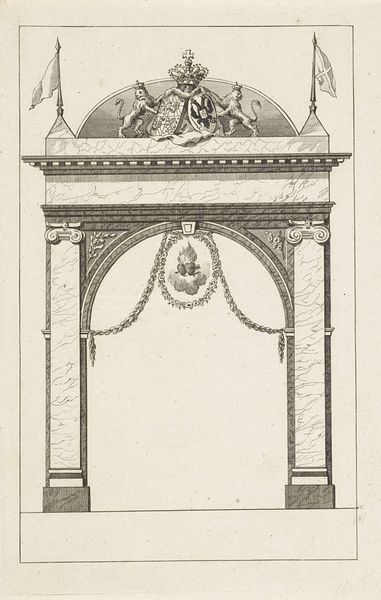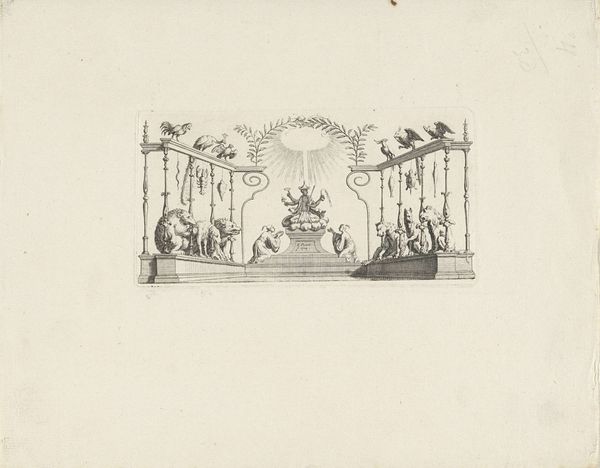
print, etching, engraving
#
neoclacissism
# print
#
etching
#
old engraving style
#
etching
#
figuration
#
line
#
cityscape
#
history-painting
#
engraving
Dimensions: height 246 mm, width 305 mm
Copyright: Rijks Museum: Open Domain
This print, made in 1795 by an anonymous artist, documents a decoration erected on the Westermarkt in Amsterdam. The printmaking process itself is key to its meaning. The fine lines, probably achieved through etching or engraving, allowed for the widespread dissemination of this image, making it a potent tool of political communication. The Westermarkt decoration was a temporary construction, a triumphal arch built to celebrate an alliance with revolutionary France. The scene depicted shows a muscular figure, possibly Hercules, vanquishing a multi-headed serpent representing the aristocracy. Note the skeletal remains at his feet, a stark warning to the old order. The meticulous detail achieved through printmaking lends a sense of authority to this political message. It's a reminder that even seemingly ephemeral art forms like temporary decorations can carry significant social and political weight when reproduced and distributed widely. This print allows us to reflect on the labor involved in both the decoration's construction and its subsequent reproduction, and how these processes contributed to shaping public opinion.
Comments
No comments
Be the first to comment and join the conversation on the ultimate creative platform.
